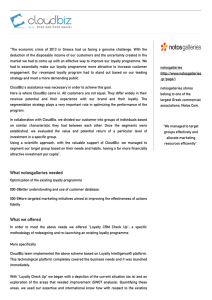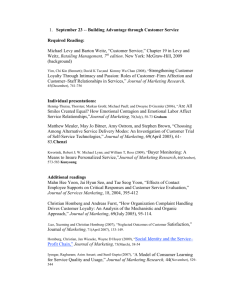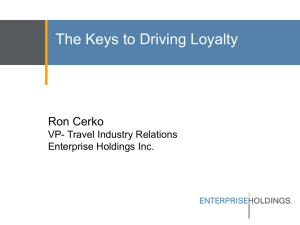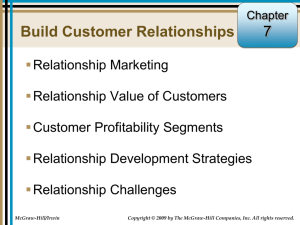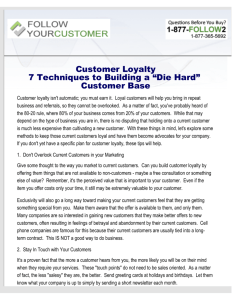Internet Marketing and e-Commerce, Instructor`s Resource Manual
advertisement
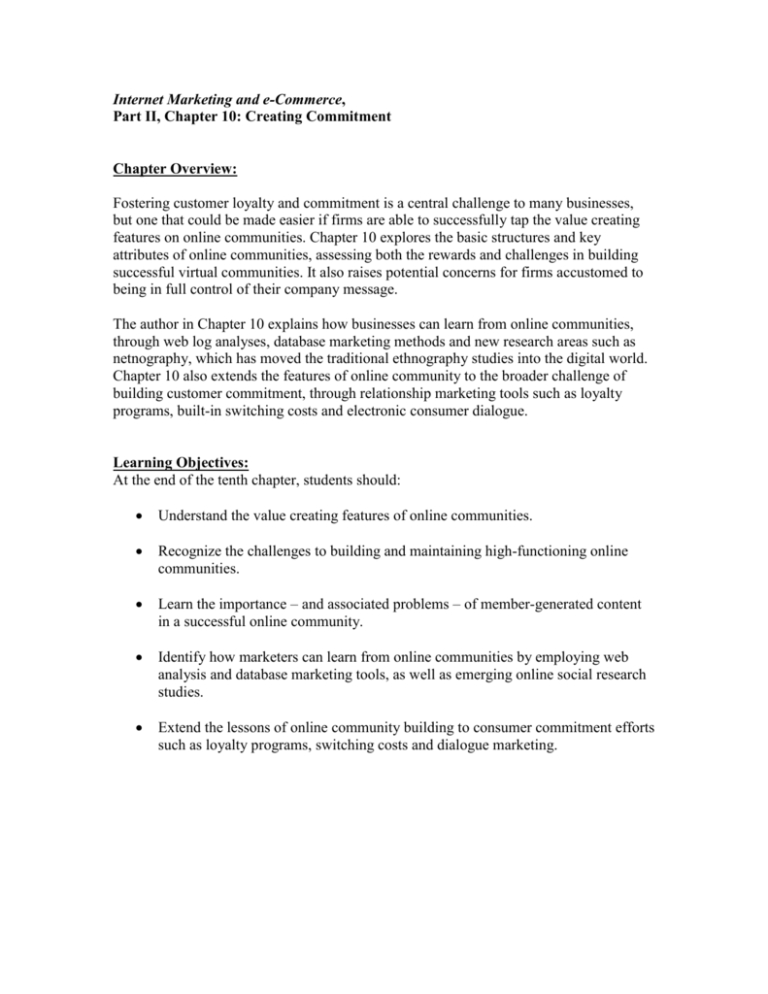
Internet Marketing and e-Commerce, Part II, Chapter 10: Creating Commitment Chapter Overview: Fostering customer loyalty and commitment is a central challenge to many businesses, but one that could be made easier if firms are able to successfully tap the value creating features on online communities. Chapter 10 explores the basic structures and key attributes of online communities, assessing both the rewards and challenges in building successful virtual communities. It also raises potential concerns for firms accustomed to being in full control of their company message. The author in Chapter 10 explains how businesses can learn from online communities, through web log analyses, database marketing methods and new research areas such as netnography, which has moved the traditional ethnography studies into the digital world. Chapter 10 also extends the features of online community to the broader challenge of building customer commitment, through relationship marketing tools such as loyalty programs, built-in switching costs and electronic consumer dialogue. Learning Objectives: At the end of the tenth chapter, students should: Understand the value creating features of online communities. Recognize the challenges to building and maintaining high-functioning online communities. Learn the importance – and associated problems – of member-generated content in a successful online community. Identify how marketers can learn from online communities by employing web analysis and database marketing tools, as well as emerging online social research studies. Extend the lessons of online community building to consumer commitment efforts such as loyalty programs, switching costs and dialogue marketing. Chapter Outline: I Building a Sense of Community Online (Pages 324 to 331) An alumni association creates community, and maybe future donors Online communities foster loyalty and value, but can be difficult to build Struggles to gain attention and drive traffic Members lose focus as online communities change or grow Content creation, user retention breaks down if members disengage Firms accustomed to controlling the message become uneasy Understanding different types of online communities Portal-based: Marked by free hosting, multiple categorization tools Affinity-based: Depend on closed set of rules defining community Purpose-built: Structured around specific tasks, most common to B2B Health of online communities dependent on interplay of four key areas: Content attractiveness: Depth and relevance of available content Member profiles: Opportunity for outreach, added value Member loyalty: Satisfaction can help grow audience Transaction offerings: Selling interest-area items brings in more vendors II Content is King: Communication and Content Tools (Pages 331 to 341) Communication rings emphasize social and relational flow of information Email dominates as most important online community tool Instant messaging and SMS bring stronger ties, greater expectation of immediate interaction Online gaming and simulation technologies as indicator of next wave Content trees bring organization and focus to community conversations Debate persists over whether online tools truly build connections, social capital The optimistic view says they have created new ways of relating, offer smart companies new ways to create and retain loyal customers The pessimistic view says online tools have stifled true community building Member produced content is crucial to a healthy online community Content generated by members is generally less expensive, current, creative and credible Member-generated contributions often skewed to heaviest contributors, but sites can also promote important or prominent content creators Member participation in online communities can expand and enhance the nature of online discussions, often aided by anonymity of the forum Member-generated content is not without risk for site sponsors Lack of control can result in off-topic, offensive messages, repetition, spam and other problems Authentication deters some problems with real-time postings Legal issues still can persist, and for sponsors, partial control or editing can create more legal exposure than no editing at all III Community Insights into Loyal and Profitable Customers (Pages 341 to 345) Content attractiveness can be measured with standard web logs, tracking of emailed articles or diversity of topic and member usage Member loyalty can be judged through log analysis, usage and duration patterns Member profiles allow use of database marketing methods Transaction offerings measure success of many online commerce activities Interaction measures such as email campaigns offer direct measures of community strength Netnography moves traditional social group study of ethnography online and helps identify motives of online community members Self-interested helpers Multiple-motive consumers Consumer advocates True altruists IV Customer Dialogue and Relationship Marketing (Pages 345 to 353) Using online community tools to analyze a firm’s consumer base Analyzing customer loyalty and customer profitability Building commitment through loyalty programs Extending customer loyalty through switching costs In dialogue marketing, using online systems to create relationship aware, interactive and closed-loop customer relations Email outreach to customers at risk of defecting Following up with high value customers, knowing when to let go Recognizing trigger moments: the tipping point for better services or trial and repeat behaviors



